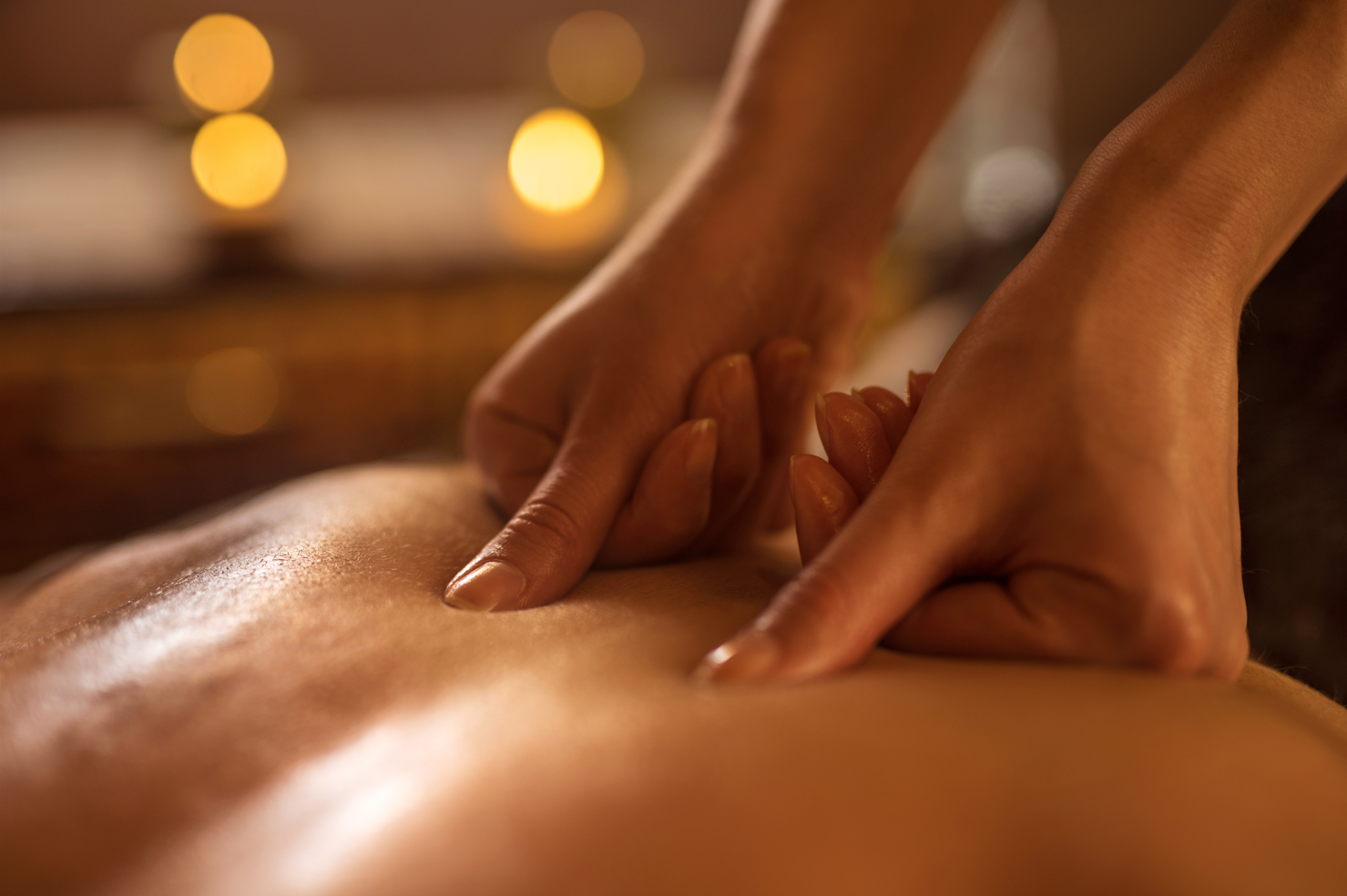Massage techniques

Here are the main massage techniques used by massage therapists. Each technique requires a minimum of 150 hours of specific training. Added to this, there are courses in anatomy, physiology, pathology, helping relationships and sexology as well as ethics and deontology.
Rooted in Japanese tradition while bordering on acupressure, Amma massage aims to stabilize the body’s energy as well as soothe the mind. It is performed without oil, on a sheet covering the skin or on clothing. Mobilizations, percussions and pressures are done on 148 specific points of the body called tsubos, all positioned along the meridians, joints and muscles.
Californian massage was created from the fusion of certain specific manipulations of Esalen® massage as well as Swedish massage. Since its beginnings, it has been intended to be a refocusing on emotions by eliminating stress and relieving muscle pain/tension. The treatment, ranging from gentle to pronounced movements, is given using long, fluid movements of the hands, punctuated by stretching and rocking throughout the body.
As its name suggests, lymphatic drainage works on the lymphatic system, the means of transporting fluids in the body, thus improving its flow. This treatment is broken down into two complementary techniques, the Leduc technique and the Vodder technique. On the skin, the massage therapist’s hands gently follow the lymphatic system, making circular movements as well as short, light pressures.
Reflexology, similar to acupressure, includes, among others, plantar reflexology (of the feet), palmar reflexology (of the hands) and facial/cranial reflexology (of the face and head). This treatment is based on reflex points (accessible on the skin) which are associated with an organ, a specific gland or a part of the body, thus helping to rebalance vital functions and relieve pain. Using the fingertips and particularly the thumb, the massage therapist stimulates the reflex points using different techniques, ranging from gentle to strong pressure, while performing repetitive movements.
Momentum massage aims to release as much tension as possible, among other things through stretching and mobilization, thus allowing the client to be more receptive to the language of their body. Any specific or pre-established maneuver is put aside in order to offer creative, intuitive treatment adapted to each person. A few short breaks are therefore necessary for the massage therapist to create a tailor-made massage. The hands, with changing movements, move slowly over the body, promoting effleurage.
Every tissue, cell and organ in the body is made up of a positive, neutral or negative pole. Polarity works to balance everything based on Ayurveda, therefore the elements that make up the universe (Air, Water, Ether, Fire and Earth). This very gentle massage is performed on clothing or directly on the skin. The hands concentrate on the poles of the body by applying different pressures.
Shiatsu massage is a blend of traditional Chinese medicine and Japanese massage techniques. It focuses, among other things, on the meridians (energy channels of the body where Qi, or vital energy, circulates) as well as on acupuncture points in order to help the body self-regulate. The treatment does not necessarily require oil, is performed on clothing and can be given on a futon. The massage therapist can use his hands, fingers, palms, elbows, knees and feet during the massage. Gentle and powerful pressure on specific points, mobilizations and stretching are provided.
The heart being at the center of Swedish massage, each gesture is intended to help the proper circulation of blood to this primary organ. The treatment can be given for both relaxation and muscle pain, which is why it is suitable for both athletes and less active people. The massage begins gently, continues in depth, then ends gently again. It relaxes the nervous system, activates blood circulation and stimulates the lymph through the five movements practiced by the massage therapist, namely effleurage (stroking), petrissage (kneading), friction, tapotement (percussion) and twisting.
Thai massage, combining meditation and yoga, is based on the energy lines of the body (the Sen), as well as on the energy that circulates there (the Prana). The treatment does not require oil, is performed on a thin mattress (with a cushion if necessary) and dressed in clothing allowing free movement. Throughout the massage, the massage therapist relies on the client’s breathing in order to gently adapt the movements (stretching, friction, pressure, etc.) using the thumbs, palms, forearms, elbows, knees and/or feet. The client sometimes makes movements completely directed and supported by the massage therapist, similar to yoga and meditation positions. This can result in an increase in energy, a reduction in muscle/joint pain, a feeling of lightness and the adoption of a better posture on a daily basis.
Trager® was discovered and refined by Doctor Milton Trager (1908-1997) when he was 18 years old. The technique is intended to be a meditative state, called Hook-up, transmitted from the massage therapist to the client using movement re-education. Adaptive, it can be practiced on a table (lying on your side or not) or on a chair. Oil is not required, the treatement can be given on clothing. The massage therapist’s touch is intended to be soothing, gentle and supple. Its speed varies between swings, stretches, elongations, vibrations, oscillations, tractions and rotations.